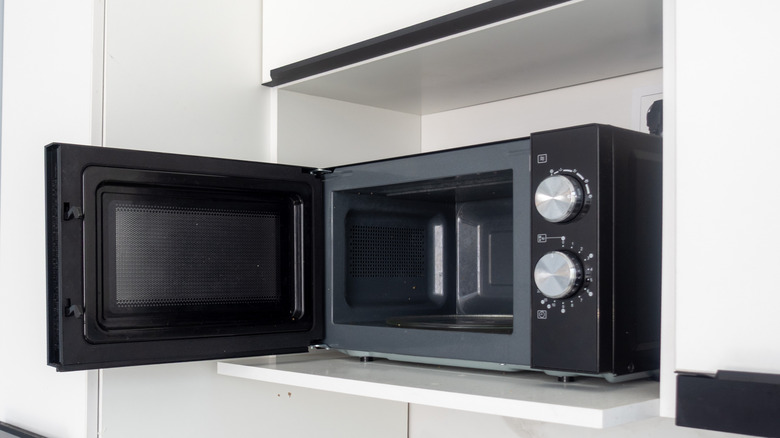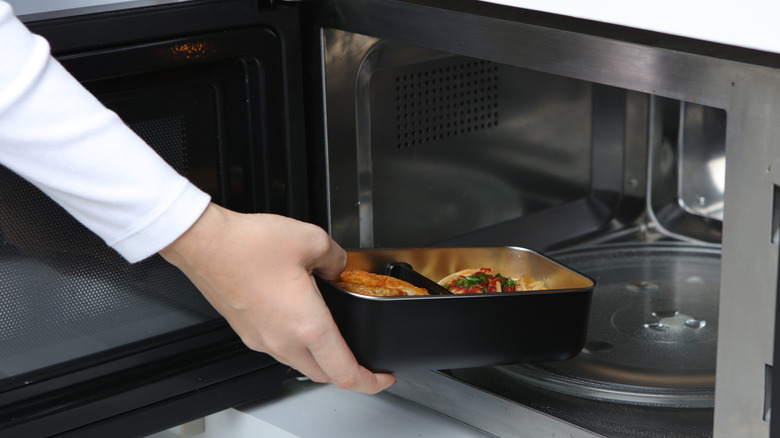We All Know You Shouldn't Put Metal In The Microwave, But Why?
Microwaves are incredibly convenient devices that brought us into a brave new era of cooking. They allow us to easily whip up freshly baked cookies anytime and cook perfectly crispy bacon without the mess. But microwaves can just as easily ruin food or, worse, cause major kitchen disasters.
Luckily, many microwave blunders can be avoided by following some basic rules, like never putting metal in a microwave. The no-metal policy has been firmly ingrained in practically every microwave-using person since popping their first bag of popcorn. Still, I'm willing to bet few of us have stopped staring impatiently at our reheating leftovers to wonder why, exactly, metal is one of the many things you should never put in a microwave.
The answer, much like microwaves themselves, is simple yet surprisingly complex. The tiny electromagnetic "microwaves," which work to heat food in a microwave appliance, simply pass through paper, plastic, and glass but reflect off metal. If a metal object is heated in a microwave, the microwaves reflect off of it, bouncing off the sharp edges and ricocheting around the appliance rather than being absorbed into the food. This not only prevents food from being heated, but it can also damage the microwave and even start fires.
Why you can sometimes put metal in the microwave
Metal and microwaves are usually an unwise and even dangerous pairing, but not always. Putting any old metal object in the microwave is a fire hazard and likely to damage the appliance, but the right kind of metal can actually be a good thing. This is quite confusing to those of us who have always been told to never, ever, not in a million years, put metal in a microwave.
Some stainless steel food containers are microwave-safe, as are the metal racks that come with some microwaves for heating food on two levels. These racks are carefully designed to have no sharp edges or arches that would reflect the microwaves and thus are perfectly safe — although this writer still cringes at the thought of putting metal in a microwave with my precious leftovers.
Some microwavable meals even strategically incorporate metal into their packaging to better cook food. For example, Hot Pockets used to come with a crisping sleeve that had a thin metal film. The outside of the sleeve absorbed the microwaves, which heated up the internal metal that then toasted the microwaveable treat with direct contact. Hot Pockets has since retired the sleeve to cut down on packaging waste, but luckily, you can cook Hot Pockets in the air fryer for the ultimate crispy crunch. However, any metal or metal-containing object not specifically designed for microwave use should never go in a microwave — otherwise sparks may fly, and not in a good way.

